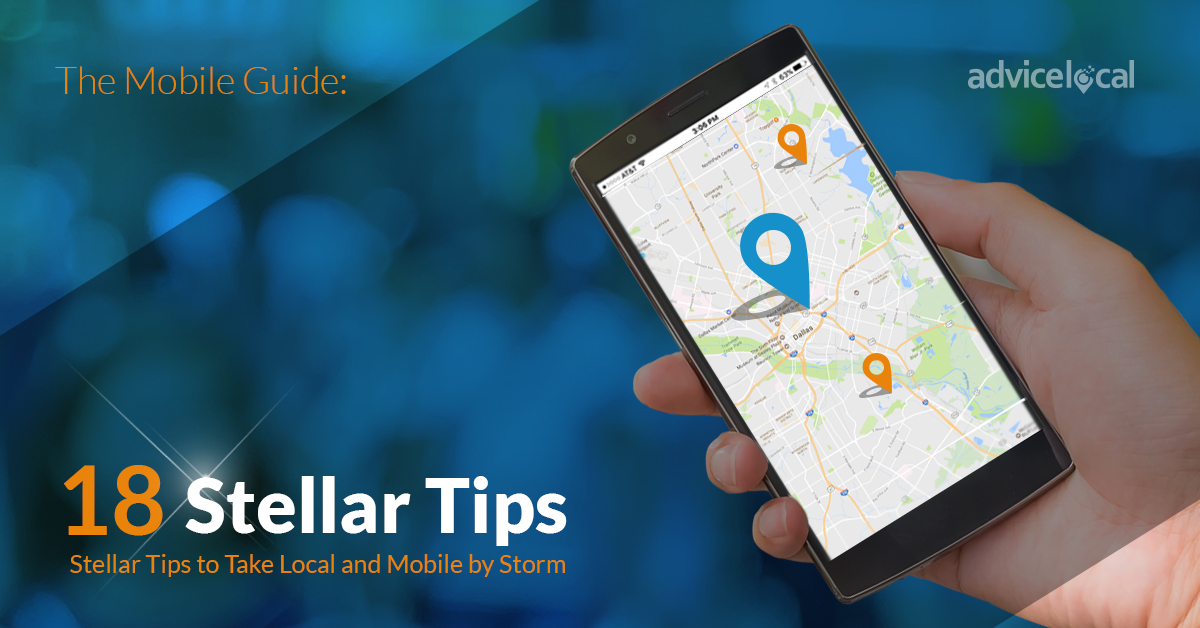The mobile phone has grown from a rarity to an indispensable component of daily living. A person who has misplaced their mobile phone will likely feel off-track, greatly inconvenienced, and worry about the security of personal info. A significant number of people report feeling anxiety when they don’t have access to their phone, and some state frankly that they feel naked without their phone or mobile device. They most likely have nomophobia. Do you? Take the quiz and find out.
OK, while I try and get that image out of my head, I can report that other people describe the mobile phone as fulfilling the role of an assistant or a butler. And how about the mobile phone’s role in your life? Going by the statistics, you are more than likely to describe it as very important. You’re accustomed to using the device to get what you want and need on the go. These are micro-moments. (Not familiar with micro-moments? Here’s a research paper for you.)
Mobile devices are everywhere and mobile search is part of being always on. Are you always on? Serving your customers or your clients’ customers in their moment of need?
18 Local and Mobile Tips to Conquer the Web
#1 – You Need a Location Data Strategy
Think beyond listing management, but if you have bad NAP data, fix it! Businesses must transform their location data into a scalable asset that is accessible, and actionable. Managing local listings is no longer simply about controlling your brand, but about getting found.
#2 – For Pete’s Sake, Be Mobile
Today’s consumer demands fast & cheap, anytime/anywhere access on multiple devices.
Definitely test your website for its mobile-friendly style and assess these factors:
- Is text easy to read without zooming in?
- Does content fit the screen?
- Ensure buttons & hyperlinks are easy to tap
- Use NO software (such as Flash)
#3 – Be Actionable … By Using These Components
- Buy buttons
- Mobile coupons
- Scheduling widget
- Share buttons
#4 – Use Mobile to Improve On-location and Online Experience for Consumers
- Use a customer comment/suggestion board for feedback
- Allow mobile-based payment options, including tablet-based e-receipts
- Employ mobile-only promotions where consumers check in to redeem promo in-store.
- Bring customers to the door with in-app deals and exclusive direct alerts
Who redeems coupons? 53% of tablet users and 40% of Smartphone users.
#5 – Social Buying: The New Norm
While shoppers have always gotten the scoop from other shoppers one way or another, accessing info from social media & online review sites is more important than ever, both for consumers and the small & medium businesses that court them.
“Social buying” is indeed the new norm. The good news:
- SMBs can add social features to smartphone apps and mobile websites pretty easily.
- Apps with the “Tell-A-Friend” feature have built-in sharing capabilities over email, Facebook, Twitter, & SMS.
- Easy to connect users with the business on popular social networks by hitting a button.
- Allows customers to take a business viral!
#6 – Try SMS – Simple Message Service
SMS (Simple Message Service) deserves special note here. Why is that?
- It’s cheap & quick
- Many younger buyers prefer it
- It’s easily personalized
- SMS is suitable for marketing, ads, as well as customer service
Forrester predicts that for consumers, text will function as a key part of the emerging trend to “push” streams of bundled communications through a single app. Interestingly, texts can feel less invasive than emails or phone calls. More than 90% of texts are read within 3 minutes of being received!
#7 – Hit Them with Content Marketing
Here are a few examples:
- A wine seller might publish a short weekly or monthly video on pairing wine and food.
- A restaurant could demo a live workshop to show how they create their signature dish.
- Any SMB dealing with the public could create a short advice blog post, or send a short, targeted text asking their audience a helpful or provocative question.
- Yes, visuals matter! Articles with pictures or videos get 94% more views.
#8 – Follow the Competition
Check out competitor websites on your mobile device(s). Sign up for their emails & newsletters. Visit their social media accounts, and see what they offer through mobile devices.
You’ll be able to determine:
- The quality of the mobile experience provided by the competition.
- Any weaknesses that you might capitalize on.
- What are your competitors doing right that could help your business?
#9 – Use Click to Call
When a customer finds your website via mobile search you want them to be able to contact you at once. Do they need to remember the number as they head for the dial pad? Do they have to jot it down as they juggle the phone? Make it easy and let them click to call!
Placing a click-to-call button in the search results lets you capture leads while they’re hot. A tap lets them dial you directly. Don’t forget the “click for directions” button that can deliver GPS directions via Google Maps.
#10 – Optimize for Local Search
Since most searches now take place on mobile devices, optimizing your website for mobile local search is a must. These stats illustrate the value of today’s mobile searcher:
- 92 percent of mobile local searchers plan to purchase within one day.
- 50 percent of local mobile searches lead to a store visit or phone call within one day.
- 70 percent of mobile searches lead to website visits within one hour.
#11 – Send Mobile-Friendly Emails
The same principles used for mobile website design can create mobile-friendly email messages:
- White space and clean layouts are your friend
- Use images optimized to load quickly
- Include large buttons & hyperlinks that are easy to click on
- Route hyperlinks to a mobile-friendly landing page
If an email doesn’t render well on their mobile device, 7 in 10 consumers say they just delete it.
#12 – Aim for Geo-Targeting
Using customer locations, geo-targeting direct marketing messages to customers within a specified area. You set the parameters. For example, you can reach out to customers near your store, or target the customers who are near your competition via paid advertising campaigns. Geo-targeting works with many mobile search tools, including Facebook, Twitter, Google AdWords & Bing Ads.
#13 – Explore Mobile Ad Options
Mobile advertising can deliver customers who are using their mobile devices to search for products you sell.
- Mobile ads are ideal for reaching customers who are ready to visit a business and/or make a purchase immediately.
- Mobile ads show up on mobile devices ONLY.
- Mobile ads get 3X more clicks (on average) than traditional online PPC ads.
#14 – Consider Developing a Mobile App
According to comScore, around 90 percent of U.S. consumers’ mobile online time is spent using apps. Apps are more simple to use than a mobile-friendly website, because they allow users to access content and complete a task (such as finding a product & purchasing) even faster and more easily. (If you need an app for your business or your customer’s business, Advice can help!)
#15 – Use Video Optimized for Mobile
Did you know that more than half of YouTube views take place on a mobile device? As you plan your production, always:
- Consider how your video is going to look on the smartphone’s very small screen.
- Keep in mind that smaller is literally better, as adding too many people or just plain making your video too busy could confuse the viewer.
- Take a look at the video thumbnail; how does it look on a tiny screen? Looking great on a PC may not translate well on a smartphone.
#16 – Use Mobile Loyalty Tools
Just as they love deals & bargains, consumers love mobile loyalty program apps and feel they get value from the programs. Some 80 percent of consumers who belong to mobile loyalty programs give them a big thumbs-up by continuing to do business with these brands!
Plus, you can monitor customer behavior, track purchases, and conduct marketing campaigns to reach out to program members on their mobile phones.
#17 – Integrate Mobile and Traditional Advertising
It’s true, today’s consumers have their smartphones in hand just about all the time.
We’re at the point where over 75 percent of mobile users use their mobile devices while they are watching television; it’s called second screening. Yes, I’ve done this myself!
When crafting your marketing messages definitely keep these mobile super-users in mind. For instance, ads placed on cable TV or radio should include a call-to-action, such as a URL leading to a mobile-friendly landing page.
#18 – Capitalize on Smartphone Use In-Store
- In cases where customers leave the store without purchasing, did you also know that smartphone use influences 39 percent of those instances?
- Customers are using their smartphones to compare prices. Research items & info, and look up other retailers who sell the same product. Use this as an opportunity to build relationships.
- Customer service is not dead! Train your staff to offer in-person assistance and additional product information as this can help make the sale. Ensure they have the tools they need (such as tablets) to quickly assist customers and find additional info to answer all questions.
Up to 90 percent of consumers use their smartphones in stores. How many times do you get your phone out while in a store?
Follow the Mobile Path to Success
Mobile is changing the landscape of the web. Today, it’s all about targeting the individual with messages relevant to them. Make it personal—work for the customer, spot their interests and interact with them, not only to sell, but to improve their life. (Still feel like mobile is a mystery? We have a paper on that too.)
Be sure to come back next week as this #QueenofLocalSEO brings you some more bite-size tips for local search success.





This is very helpful for my business. I often struggle with niche marketing. These are great tips.